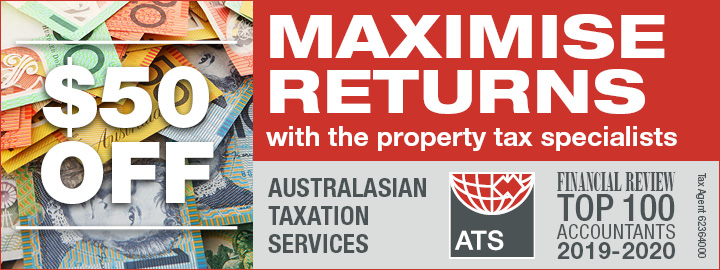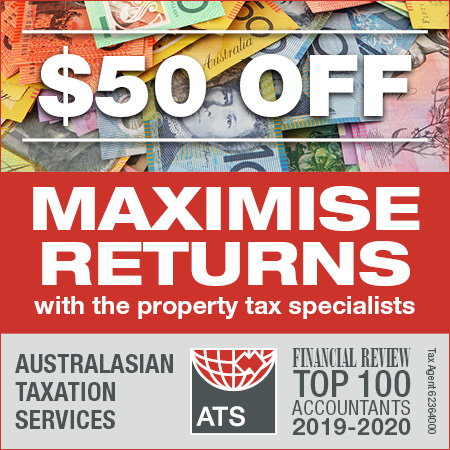Melbourne's three best - and worst - investment suburbs
The data has been crunched and the results are in - revealed are the top three property investment prospects in Melbourne, the three suburbs investors should be watching that are benefiting from rail network expansion, as well as the three suburbs best avoided.
Melbourne’s property market has underperformed compared to other Australian cities.
Continued high levels of international immigration, however, are fuelling speculation that increased population pressures could put upward pressure on prices in the Victorian capital.
API Magazine columnist and property data specialist Kent Lardner said analysis of a range of factors vital to a successful real estate investment had revealed the top three suburbs for property investors to target.
Conversely, he has also singled out the worst three investment suburb prospects.
And with Melbourne’s rail network expanding, many investors are speculating on what that might mean for the property market along those routes. The top three suburbs on the train line for investor potential are also revealed.
Melbourne’s top three investment prospects
Based on the latest data, these are the top three suburbs in Melbourne for property investors.
These suburbs exhibit a combination of strong rental yields, manageable inventory levels, and favourable affordability metrics, making them attractive options for investors.
Situated in Melbourne’s western suburbs, Altona Meadows boasts a median listing price of $719,250, with an average rental yield of 3.25 per cent.
Currently, the inventory sits at 1.93 months, down from 2.59 months 12 months ago, indicating a tightening market. The suburb’s rental market shows a relatively low vacancy rate of 0.71 per cent, with rental affordability at 29.24 per cent.
Additionally, the buying affordability is 9.01 years, reflecting a balanced market for potential home buyers and investors.
Located in Melbourne’s outer east, Chirnside Park offers a median house price of $890,000.
With a rental yield of 3.33 per cent, the suburb presents a solid investment opportunity.
Inventory levels are at 2.24 months, slightly up from 1.37 months a year ago, suggesting a moderate increase in supply.
The suburb benefits from a zero percent vacancy rate, highlighting strong rental demand. Rental affordability is favourable at 27.8 per cent, while buying affordability stands at 8.35 years, indicating a relatively balanced market for both renters and buyers.
Wandin North, in Melbourne’s northeast, has a median house price of $850,000.
It offers the highest rental yield among the three suburbs at 3.66 per cent.
Current inventory is 2.48 months, which is a decrease from 3.60 months a year ago, indicating an improving market for sellers.
The suburb’s vacancy rate is 1.60 per cent, showing healthy rental demand. Rental affordability is 27.9 per cent, with buying affordability at 7.63 years, making it an appealing choice for investors seeking a strong rental return and moderate entry costs.
Overall, these suburbs provide a compelling mix of investment potential, low vacancy rates, and manageable affordability, positioning them as the top choices for property investors in Melbourne.
Melbourne’s top train line investment suburbs
The advent of new rail stations in Melbourne has markedly enhanced the appeal of several suburbs, with three suburbs emerging as the prime investment locations.
These suburbs are not only benefitting from improved connectivity but also demonstrating strong market fundamentals.
Overall, the development of new rail stations is positively impacting these suburbs, driving demand and enhancing their attractiveness for property investors.
Burwood, situated in Melbourne's inner east, stands out with a median listing price of $1,596,000.
This suburb offers a moderate rental yield of 2.25 per cent, with a rental median of $615 per week. The inventory level is at 2.74 months, a slight increase from 2.53 months a year ago, suggesting a stable market.
The suburb’s rental vacancy rate is 1.3 per cent, indicative of robust demand. Rental affordability is 36.5 per cent, while buying affordability is 16.22 years, making it a strategic choice for long-term investors capitalising on the suburb’s growth potential due to its proximity to the new rail station.
Burwood East is another suburb experiencing significant uplift, with a median house price of $1,371,120.
The suburb presents a rental yield of 2.40 per cent with a median lease price of $600 per week. Inventory levels are currently at 1.06 months, down from 1.18 months 12 months ago, indicating a tightening market.
The vacancy rate here is 1.7 per cent, reflecting strong rental demand.
Rental affordability is 37.3 per cent, and buying affordability stands at 15.54 years, positioning Burwood East as a compelling option for investors looking to leverage the benefits of new rail infrastructure.
Cheltenham, located in Melbourne's south-east, features a median house price of $1,263,600 and offers a higher rental yield of 2.94 per cent.
The median lease price is $690 per week. Inventory is at 1.37 months, a slight increase from 1.30 months a year ago, suggesting steady market conditions.
With a low vacancy rate of 0.62 per cent, Cheltenham demonstrates strong rental demand.
The suburb’s rental affordability is 36.0 per cent, and buying affordability is 12.23 years, making it an attractive proposition for investors aiming to benefit from the suburb’s enhanced accessibility due to the new rail station.
The three suburbs ringing investor alarm bells
The latest data highlights the three suburbs presenting the least favourable prospects for property investors in Melbourne.
They are driven by high inventory levels and concerning market pressures. These factors contribute to lower attractiveness, particularly from a rental affordability perspective.
Melton South presents a median listing price of $569,872, with a rental yield of 4.38 per cent. The suburb faces significant challenges, with inventory levels at 8.12 months, up from 7.51 months three months ago, indicating an oversupplied market.
This high inventory puts downward pressure on prices and rental rates. The median lease price is $400 per week, and the rental affordability is relatively high at 33.09 per cent, reflecting the cost burden on renters.
The suburb’s vacancy rate stands at 2.81 per cent, suggesting difficulties in attracting tenants, which can further exacerbate rental market pressures.
St Albans, with a median house price of $632,800, has a rental yield of 3.44 per cent.
The suburb’s inventory level is currently 5.57 months, up from 4.74 months three months ago, indicating a growing supply issue.
The median lease price is $430 per week, with rental affordability at 35.7 per cent, making it less attractive for renters due to the higher cost burden.
The vacancy rate in St Albans is 1.17 per cent, showing a moderate level of rental demand. However, the increasing inventory levels signal potential challenges for property owners in maintaining occupancy and rental income.
Sunshine North features a median house price of $777,920 and a rental yield of 3.37 per cent. The suburb struggles with an inventory level of 6.00 months, up from 5.63 months three months ago, reflecting an oversupplied market.
The median lease price is $470 per week, with rental affordability at 33.6 per cent, indicating a significant financial burden on renters.
The vacancy rate is 1.89 per cent, suggesting moderate rental demand, but the high inventory levels could lead to longer vacancy periods and increased competition among landlords.
Overall, these suburbs face considerable market pressures due to high inventory levels and rental affordability challenges. These factors contribute to a less favourable investment environment, highlighting the need for careful consideration and strategic planning by potential investors.





















